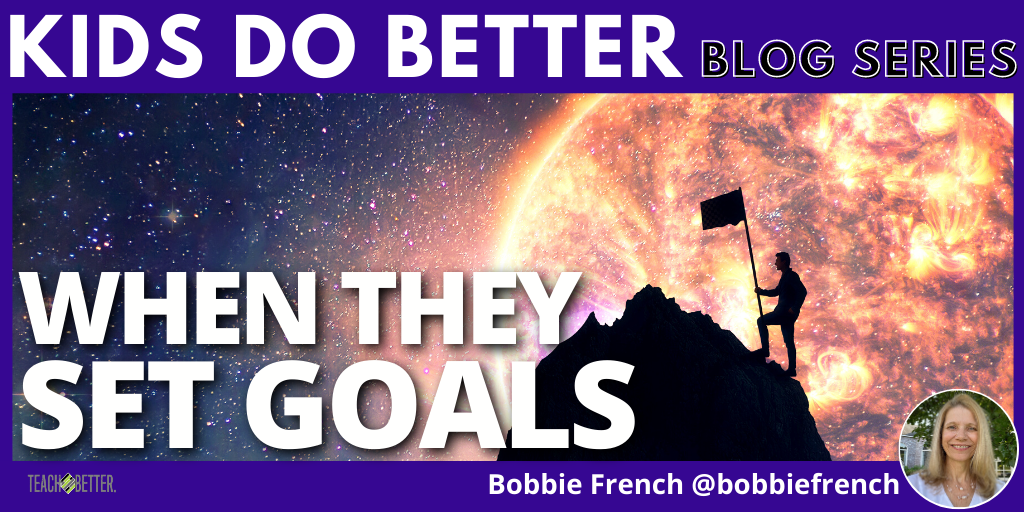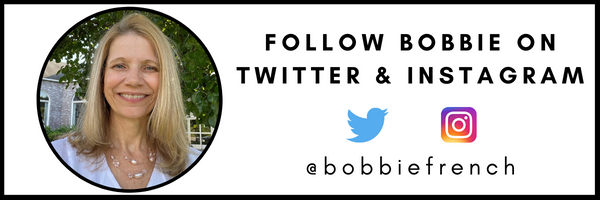TL;DR:
- It’s important to support students in setting their goals.
- Choose one word or use a vision board to set goals.
- Develop an interest map and help students understand the steps toward meeting their goals.
- Help students learn to adjust and reflect.
As we put up a new calendar and reflect on what the blank page that 2023 will be, many of us will start to think about our goals. These goals may be in the form of a resolution, choosing a One Word, or setting a SMART goal for the coming year.
We set goals to help give us direction and steps to move us toward those goals. We are bombarded with many different ways to set goals which usually include setting a specific goal with manageable steps. Instead of saying I want to eat healthily, we are more apt to work towards that goal if we can make it specific. Breaking down our goals into steps helps us see success. We may want to add one serving of vegetables a day, drink 8 glasses of water, or eliminate processed foods to see progress toward our ultimate goal.
A vision board also allows them to have a space to express themselves and explore who they are and who they want to be. We want them to dream big. Click To TweetSetting Goals
We all have goals. Take a minute to think about your current goals. Do you have a plan mapped out to reach them?
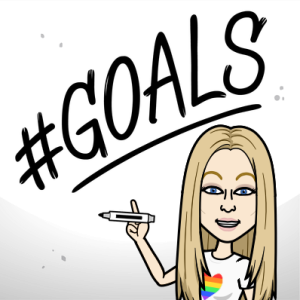
Do you have manageable steps that you are taking to see your progress?
What would you do without a goal to strive for?
I can’t imagine not having goals. Not having something that I am striving for or planning for. What goals do our students have? Have we asked them? Have we involved them in setting goals for themselves? How can we support our students in making progress toward their goals?
Goal setting is a skill and a skill is something we teach. How can we teach our students how to set goals?
There are a few ways we can support our students in setting goals.
Choosing One Word
One of my favorite activities to do with my students at the beginning of the year is to help them choose one word. Yes, even our students can choose One Word to support them throughout the year or even just for a short time. I have used both “One Word for Kids- a great way to have your best year ever” by Jon Gordon, Dan Britton, and Jimmy Page, and “The Word Collector” by Peter H. Reynolds to introduce this concept to students.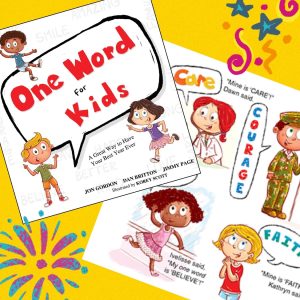
Students take time to think about their One Word and choose a word to drive their goals for the year. I also tie their One World into an art project to make their word more tangible and to have something to remind them of their word throughout the year.
These projects can be as simple as drawing and decorating their word on a piece of paper, painting on a canvas, or making a clay creation of their word. We all do best when we can see our word and have that reminder like a compass. I’ve had my One Word put on a bracelet to wear as a daily reminder.
As educators, we need to help our students learn how to set goals and work toward them during the year.
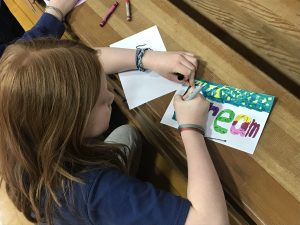 We can’t just have our students choose a word in January and then let them figure out the rest of the year for themselves.
We can’t just have our students choose a word in January and then let them figure out the rest of the year for themselves.
Find a way to build into your lessons or routine a way to revisit students’ chosen word each month. A One Word journal with monthly (or weekly) prompts will help students focus on their goals and the progress they are making. Conferencing with students around their word and what help they may need to reach their goal will guide students in how goal setting and taking steps toward it can empower them to set achievable goals.
Create a Vision Board
A vision board (paper or digital) is a powerful tool to help you visualize your goal through a collage of words and pictures representing your goals or dreams. Vision boards can help our students see the importance of setting priorities. They can help students build confidence as they see their goals as achievable. A vision board also allows them to have a space to express themselves and explore who they are and who they want to be. We want them to dream big.
Introduce students to vision boards and share some examples. Walk your students through a visualization activity. Play some music to set the mood and ask them some guiding questions to think about and visualize. The questions will vary depending on the age of your students and the goals you’re helping them set.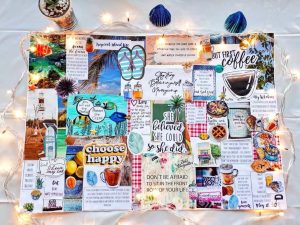
Have students set goals and think about what they want. It’s helpful to encourage students to be as specific as possible when setting their goals. Wanting to be a millionaire will seem like an impossible goal to reach but saving $100 a month would be more manageable and could lead to their goal.
Time to create. Provide your students with the supplies needed and guide them in choosing words and photos that relate to their goals. They may need to see examples of how to put them together into a collage and use more specific words and photos. They may want to include power words or affirmations. We want students to feel good about themselves, boost their confidence, and support them as they use their visualization board to achieve their goals and dreams.
Develop an Interest Map
Have students think about things they like to do and things they are good at or like to do. Guide students in looking at their list of interests to find patterns. Do they like to be active, do they like to help people, or do they enjoy creating things?
Students then use this information to create an interest map. Think of it like a brainstorming web with circles that connect in a way that the students’ interests connect to one another. Guide students in using their map to develop goals that are relevant and meaningful to them.
Break the goals into actionable steps they can take. Guiding students through developing an interest map to generate their goals will help them learn more about themselves along the way.
[scroll down to keep reading]Embrace Goal Setting Opportunities
We need to embrace the opportunities we have at school that can support students in practicing their goal-setting skills. I had students that would take the NWEA MAP tests three times per year. This was a benchmarking assessment for us to help guide our instruction and support for students. One challenge with any of these online assessments is motivating students to want to do their best. We’ve gone as far as having a Rock the Test pep rally to motivate students and show them the importance of doing their best.
We then started having students set goals for this test. We’d share their RIT score with them and explain how this is an individual score and that scores are made to be beaten. We would ask students to set a goal for themselves and we would write those goals on their desks with dry-erase markers as they get ready to take the test. We were amazed at how motivated our students were to do their best on the test. Their scores continued to improve as they were eager to learn and reach their goals.
Learn to Reflect and Adjust

The final part of goal setting with students is helping them to reflect. What’s working? What has gone well? What can they do differently to achieve their goals? We don’t want students to become discouraged when they don’t easily reach their goals. We want to encourage students to continue working toward their goals and never give up. And we want them to build their self-confidence and believe in themselves.
We can help students take ownership of their learning goals and beyond. We can help students decide what they want to accomplish and learn ways to set goals to get there.
New Year, New Opportunity
Take the start of the new year to become a goal-setting class. Incorporate goal-setting skills into your lesson planning. Share and model your own goals and process with students. Let them know you believe in them and all they can achieve.
About Bobbie French
Bobbie French is an educational leader, presenter and writer from Massachusetts.
Bobbie has been an educator for over 24 years. She has been an elementary guidance counselor, classroom teacher, special education coordinator, Title I Director, Preschool Director and Administrator.
Bobbie is passionate about focusing on the whole child and creating an environment where all students have a sense of belonging. She appreciates and recognizes the hard work of teachers, and is committed to supporting others to be their best for kids every day. Her passion and enthusiasm for creating a positive and engaging school culture is contagious.
Bobbie is also an avid photographer and loves to tell her school’s story.

